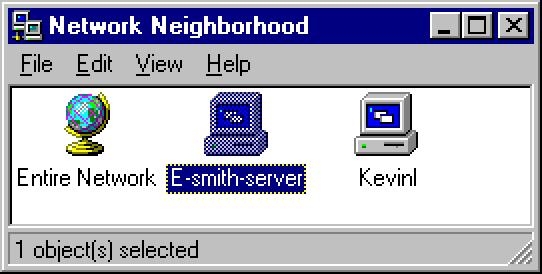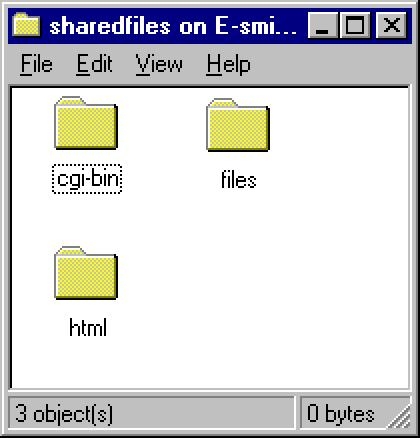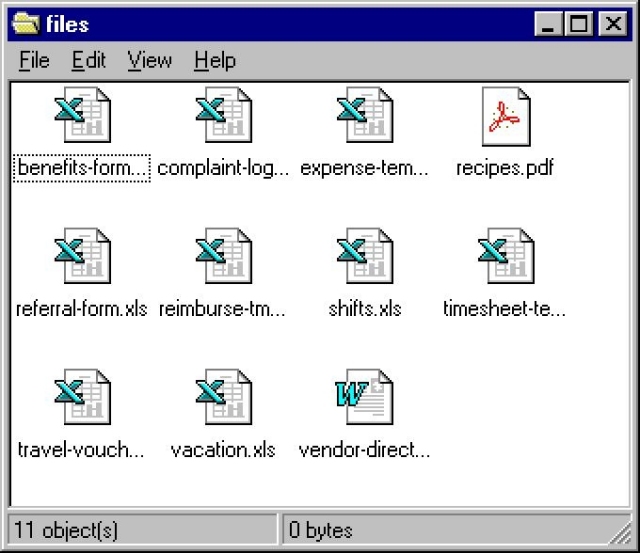14.6. An i-bay Used as a Shared Network Drive
Having a shared network drive can be very helpful as a way of storing and sharing documents company-wide. TPV uses an i-bay for a company-wide network drive to hold documents to which all employees should have access. All employees can read and write files to this directory.
The i-bay is accessed via Windows file sharing, AppleTalk or FTP. To access using file sharing, simply access the server over the network (via Network Neighborhood) and open the appropriate i-bay . You will see the files located in the files directory and can then open them or copy them to your system.
| Note | |
|---|---|
|
This is only true if the i-bay has been set to allow public access via web or anonymous ftp. If an i-bay is set for no public access via web or anonymous ftp, users connecting to the i-bay through Windows or Macintosh file sharing will simply see the contents of the files directory. However, if the i-bay settings are later changed to allow public access through web or anonymous ftp, users will then see the top-level directory of the i-bay with the three subdirectories of html, files and cgi-bin. The items they were used to seeing before will now be found in the files directory. |
As an example, when the staff of The Pagan Vegan goes into their Network Neighborhood, they double-click on "E-smith-server" as shown in:

They will then see a list of i-bays accessible through Windows file sharing. When they click on one of them called "sharedfiles", they see the three folders inside of the i-bay:

When they go inside of files, they will then see the list of documents provided there:

As you can see in this example, The Pagan Vegan has several files in this directory for company use. Providing a centralized location for company documents (such as expense report templates) ensures that everyone always has access to these documents and uses the most up-to-date version.